MAVS Deployments
The following selection of successful MAVS deployments provide some context for the instruments functionality, flexibility, and range of conditions. Please contact us with any question in finding the current meter for your project.
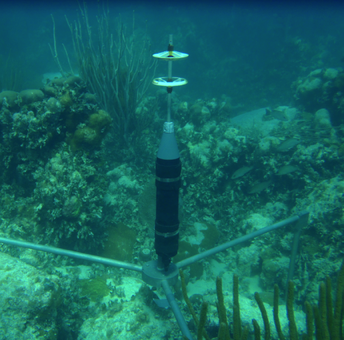
Lander in the Florida Keys:
MAVS on a bottom lander measured temperature and oxygen flux across a coral reef in the Florida Keys to determine rates of respiration and bio productivity by the reef and its response to ocean acidification.
MAVS on a bottom lander measured temperature and oxygen flux across a coral reef in the Florida Keys to determine rates of respiration and bio productivity by the reef and its response to ocean acidification.
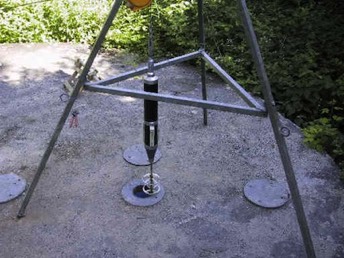
Measuring Convective Currents in Flooded Mine Shaft:
MAVS is lowered through a borehole in a mineshaft concrete cover. The shaft has a diameter of about 6 meters and is 900 meters deep. They measured at some 20 points over the whole water column and first sight at the raw data indicates that the current meter reveals some convection behavior within the shaft that is of interest.
MAVS is lowered through a borehole in a mineshaft concrete cover. The shaft has a diameter of about 6 meters and is 900 meters deep. They measured at some 20 points over the whole water column and first sight at the raw data indicates that the current meter reveals some convection behavior within the shaft that is of interest.
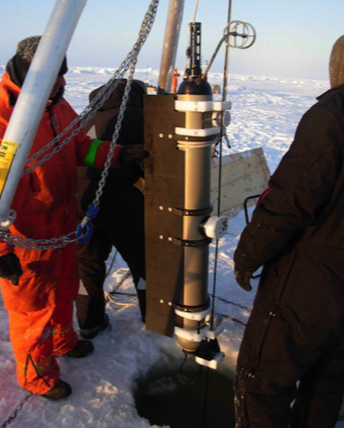
Arctic Ocean Ice Hole:
MAVS sensor on the Ice Tethered Profiler about to deploy for a year, profiling velocity down to 800m and turbulent mixing 5 m below the surface, to better understand heat transport in the Arctic Ocean.
MAVS sensor on the Ice Tethered Profiler about to deploy for a year, profiling velocity down to 800m and turbulent mixing 5 m below the surface, to better understand heat transport in the Arctic Ocean.
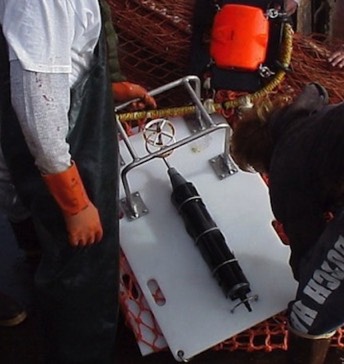
Alaskan Fisheries
The bent sensor MAVS mounted on the head board of this trawl net measures water flow into the net during a tow with 3 D resolution to include vertical components as well as horizontal components of flow into the net.
The bent sensor MAVS mounted on the head board of this trawl net measures water flow into the net during a tow with 3 D resolution to include vertical components as well as horizontal components of flow into the net.
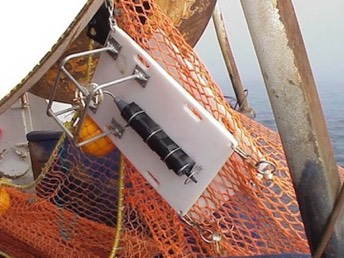
Bearing Sea Survey:
MAVS mounted on the head board of a fishing trawl net measured the volume of water sampled in a NOAA Fisheries survey for setting sustainable fishing limits in the Bering Sea.
MAVS mounted on the head board of a fishing trawl net measured the volume of water sampled in a NOAA Fisheries survey for setting sustainable fishing limits in the Bering Sea.
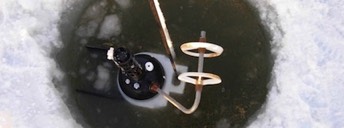
MAVS Ice Tethered Profiler
The MAVS sensor in front of the cable along which the Ice Tethered profiler runs measures flow unobstructed by the housing or the cable. The ice drill is helicoptered to the deployment site from an ice breaker so the hole diameter is limited requiring a short fin on the Profiler. Since the short fin cannot suppress swinging and oscillation of the profiler housing MAVS requires precise inertial orientation sensing in the instrument to correct the motion.
The MAVS sensor in front of the cable along which the Ice Tethered profiler runs measures flow unobstructed by the housing or the cable. The ice drill is helicoptered to the deployment site from an ice breaker so the hole diameter is limited requiring a short fin on the Profiler. Since the short fin cannot suppress swinging and oscillation of the profiler housing MAVS requires precise inertial orientation sensing in the instrument to correct the motion.
